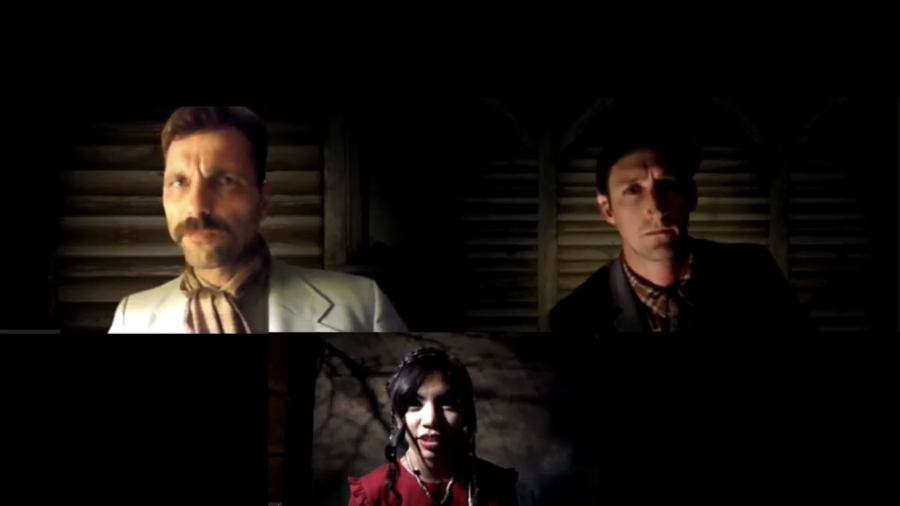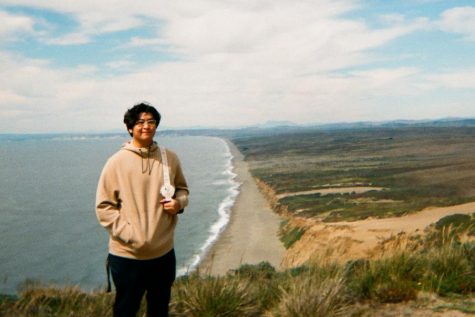Amid this pandemic, San Diego Mesa College’s Dramatic Arts Department gave the audience an online live performance with their latest play “Tales of Terror” fitting in the spirit of Halloween.
The performance is a collection of four suspenseful radio plays performed live by the students of Mesa College Theatre Company. The four plays were “Sorry, Wrong Number,” “The Damn Thing,” “Picture in the House” and “Charon.”
Jesse Keller, one of the directors of the show, explained that no one would have expected how this performance would’ve played out considering the quarantine situation.
“Our current quarantine situation has completely reshaped practicing & teaching theatre in every way conceivable,” said Keller. “Everything is happening via Zoom — we’re rehearsing the ‘radio play’ format productions we’re producing first, having production and design meetings, etc., all virtually.”
Keller also added that doing an online live performance “on YouTube, this time around is also different since we can’t interact with our audience. It feels different performing for a camera and an imagined audience, as opposed to seeing a full theatre audience, hearing laughs, etc.”
“The Damn Thing,” written by Ambrose Bierce and directed by George Ye, was one of the highlights of the show. The horror story entails an inquest that took place for an investigation of a suspicious death. Morgan, a man that lived in the west of 1890, gets unsettled by a phenomenon he can’t see. He hunts with his friend Harker and disturbs the unseen creature. Nick Mayer, the lead actor that plays Harker, shares his experience of the performance.
“The experience was definitely different than a typical theatre performance. It is almost its own thing, not quite like doing a film project and not quite like theatre either. It was very fun to collaborate with everyone even via zoom,” said Mayer.
He also added that “Some pros to the online performance were first and foremost being able to perform during this time where social interaction is supposed to be kept to a minimum. Also, it was nice because there was no travel time, you were right there on set already,” said Mayer. “Some cons were that we were not there physically with our cast and crewmates. While the sense of camaraderie was there, I missed being near other people, the audience included. Also, it was a bit difficult to interact with a webcam while performing live.”
Mayer pointed out the importance of every role in making this digital show happen. “It was such a great experience because of the people who worked so hard to make it all happen and bring it all together. What a solid group of professionals. I count myself lucky to have been a part of that project and among those involved.”
Chase Yturralde, the digital imagery platform technician, said that his perspective was a true technical standpoint. “I used (Open Broadcaster Software) so we could control the stream more than Zoom would usually give you, that is where a lot of the complications came in,” said Yturralde. He used OBS to control what was seen in the livestream plus “to make the director’s needs and wants for visuals and visual effects come to the screen.”
Yturralde and Eli Thoron, a sound designer, would work together to timely project the transition and broadcast the sound, and he said that they “had to time out transitions and sound effects together to work with what the actors are doing on screen and build the ambiance.”
Yturralde explained more complications that came with the production. “Internet buffering, on stage, everyone is the same quality and lit properly and professionally but on zoom people’s webcams will be different and the lighting is so much harder to control, and for a digital performance it’s harder to connect with everyone the same way that the stage would allow.”
He also explained the benefits. “There are a lot more ways to safety net and control what the audience sees, you can apply filters, change the set quickly, take people off-screen in an instant, and an important one really is the background on the actor.”
To those that missed these frightening horrors, you’ll have another chance to see their next upcoming contemporary take on “Romeo and Juliet.” It brings a plot twist of what would have happened if Romeo and Juliet met on Tinder, scheduled for Dec. 3-6.


